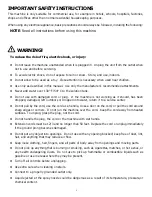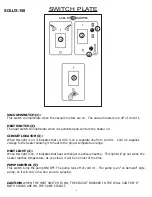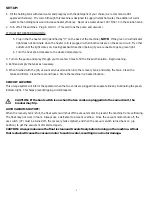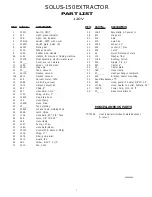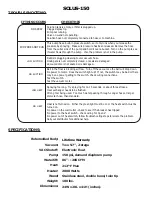
5
SET-UP:
1.
Fill the holding tank with clear water and prespray with the detergent of your choice (we recommend a CRI
approved chemical). Mix well. Although this machine is designed to supply instant hot water, the addition of warm
water to the holding tank would increase heater efficiency. Never use water above 130º F/54º C in the solution tank.
2. Turn off all the switches. Plug in cord #1. (This cord runs the pump and vacuum).
IF YOU WANT HEATED SOLUTION:
5. Plug in the the heater cord (identified by “H” on the back of the machine). NOTE: If the green circuit indicator
light does not illuminate when the heater cord is plugged in, then both cords are on the same circuit. Try other
outlets until the light comes on. See Bypass Switch section (below) if you are unable to get a green light.
6. Turn the heat knob clockwise to the desired temperature.
3. Turn on the pump and spray through your tool a few times to fill the lines with solution. Begin cleaning.
4. Refill and empty the tanks as necessary.
5. When finished with the job, vacuum all unused solution into the recovery tank, and dump the tank. Clean the
tanks and filters. Clean the tool and hoses. Store the machine in a heated location.
CIRCUIT LOCATOR:
This unique system will inform the operator when the two cords are plugged into separate lines by illuminating the green,
indicator light. This helps prevent tripping circuit breakers.
CAUTION: If the heat switch is on when the two cords are plugged into the same circuit, the
breaker may trip.
AUTO VACUUM SHUTOFF:
When the recovery tank is full, the float system will shut off the vacuum motor to prevent the machine from overflowing.
The float may not work in foam. Always use a defoamer to prevent overflow. Once the vacuum motor shuts off, the
vac switch (#7) must be turned off, the recovery tank emptied, and then the vacuum swtich turned back on (up
position) to get the vacuum motor started again.
CAUTION: Always make sure the float is clean and travels freely before turning on the machine. A float
that is stuck will cause the vacuum motor to suck in water, resulting in vac motor damage.


